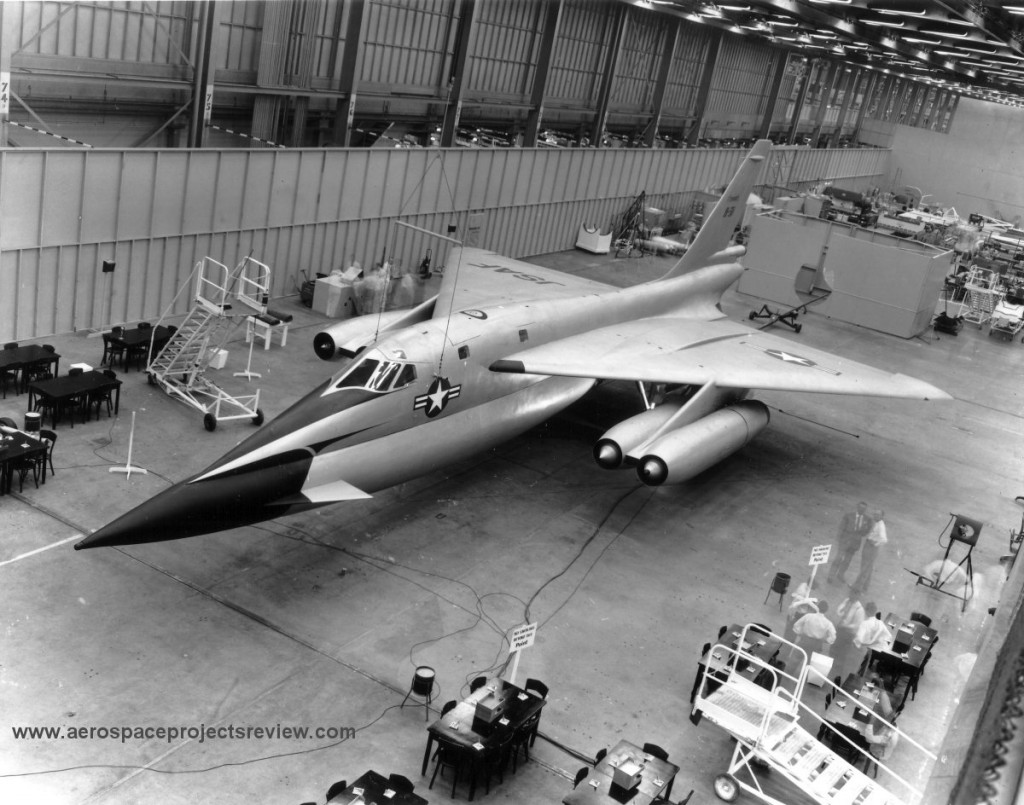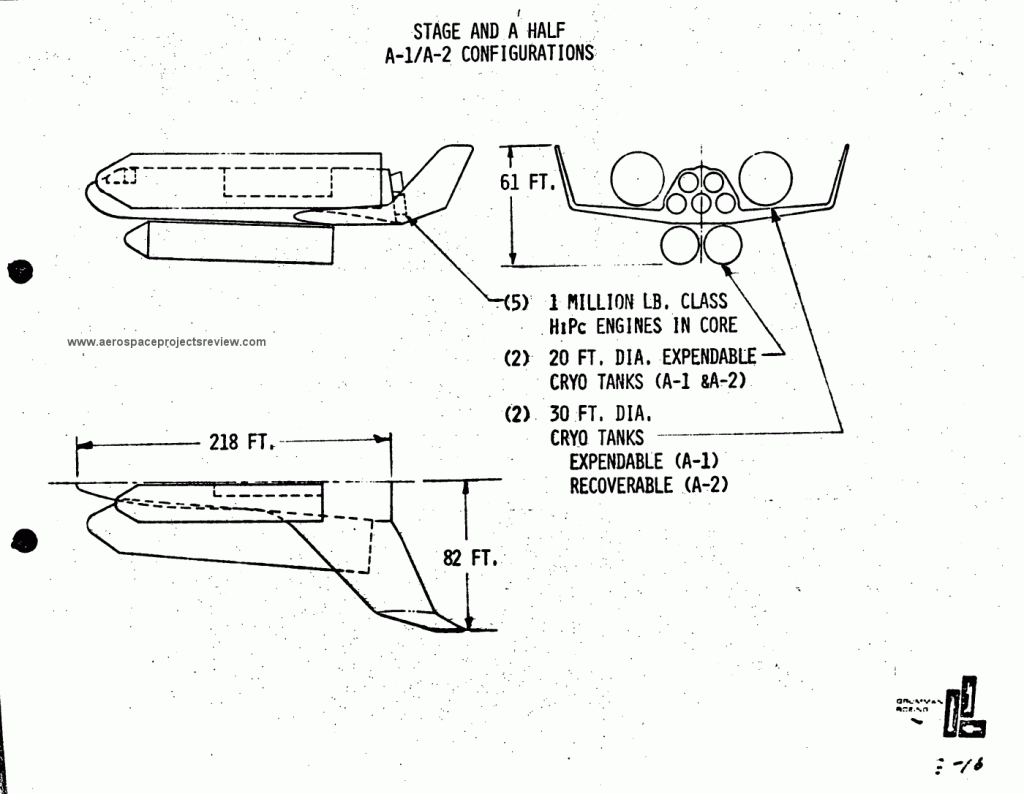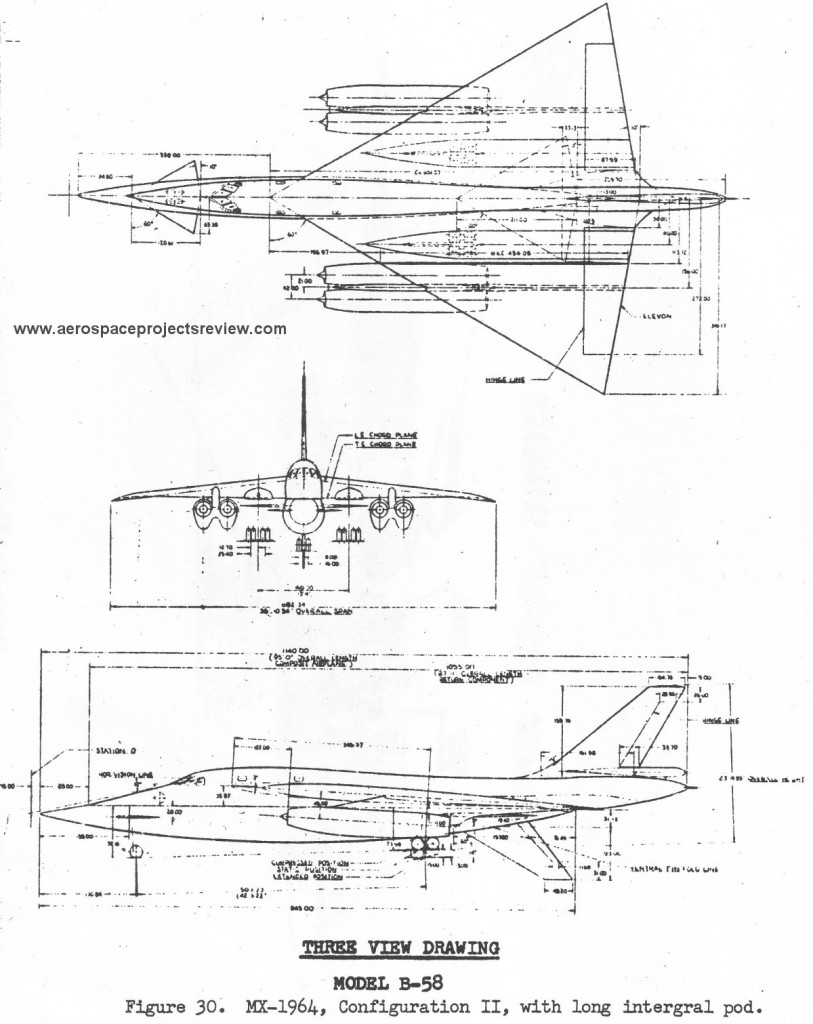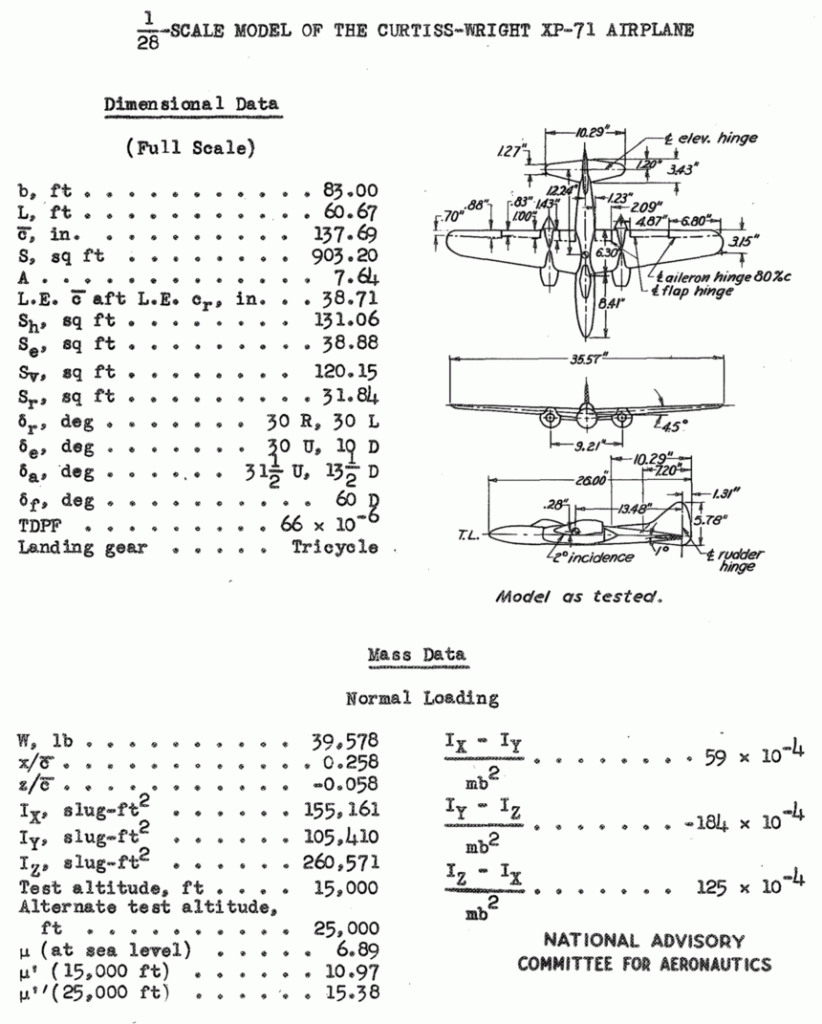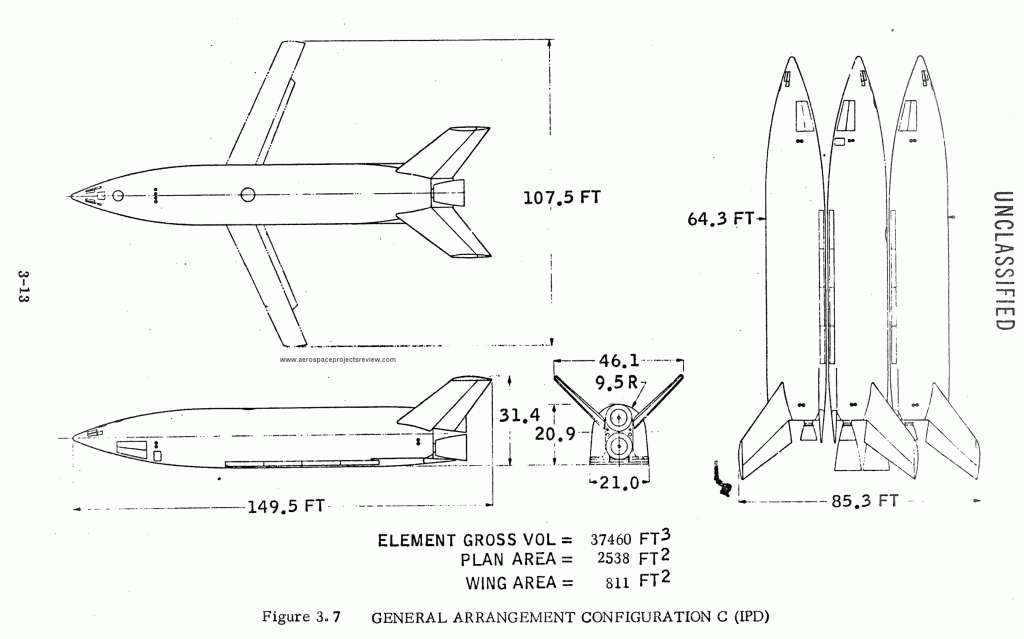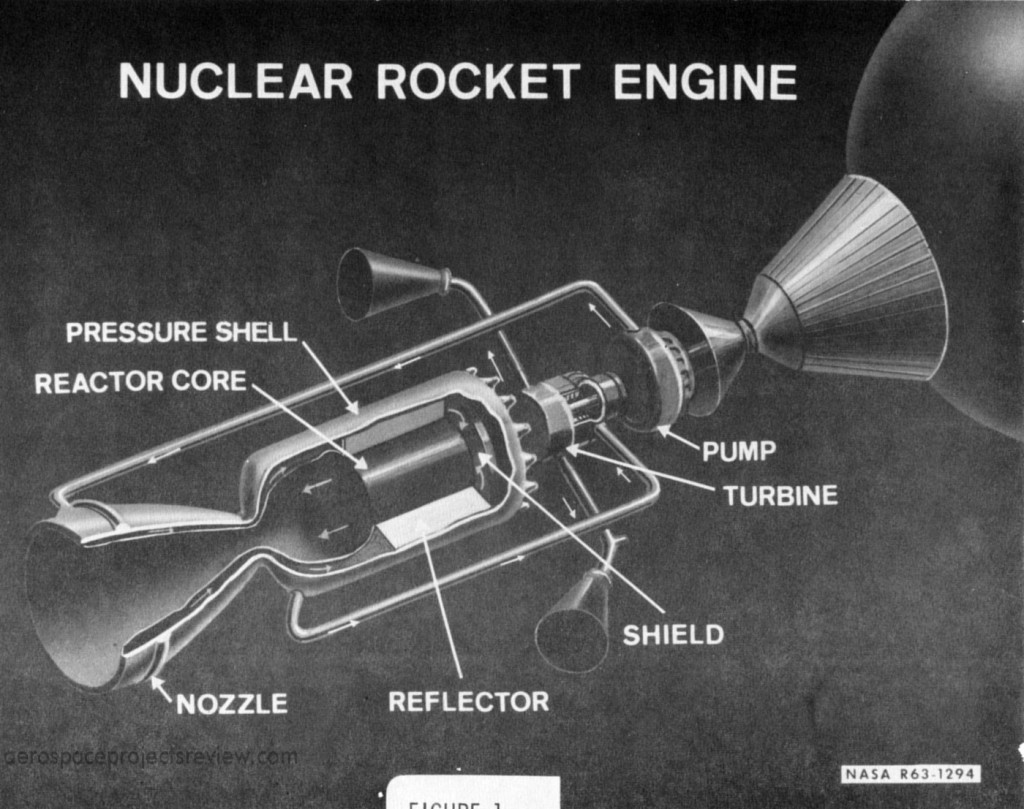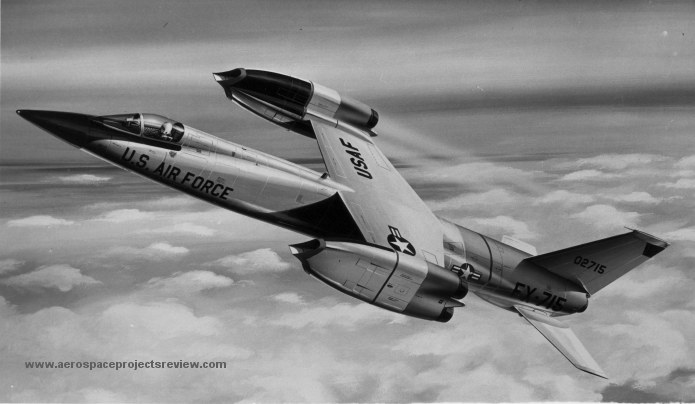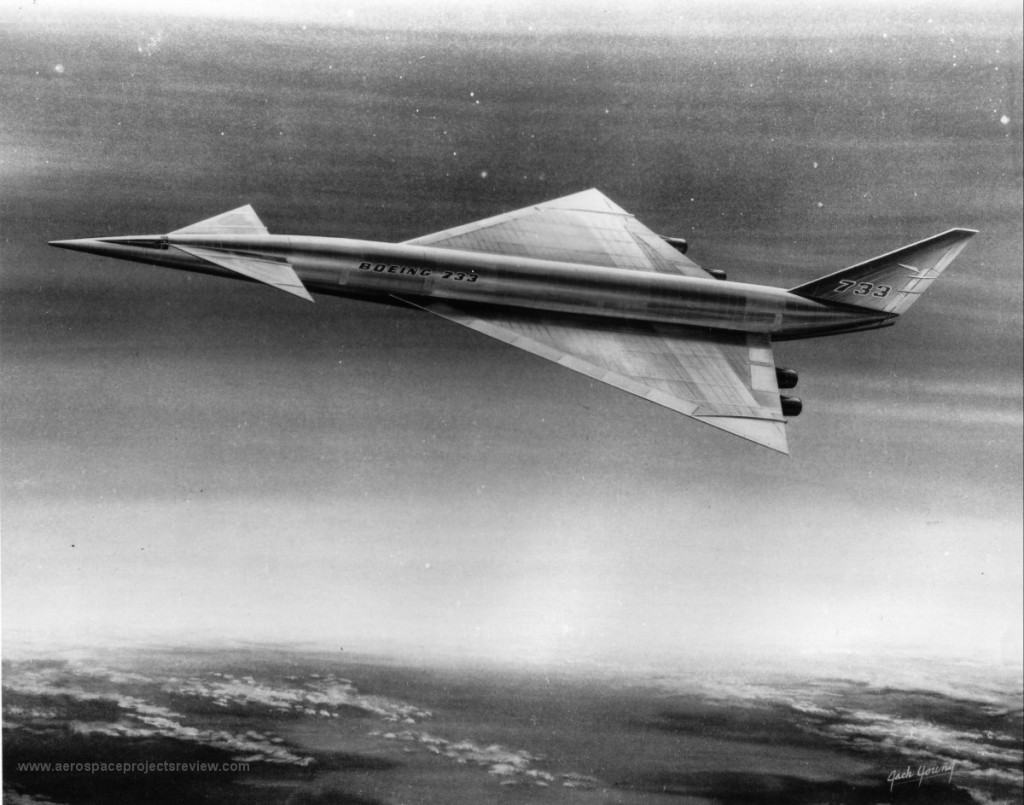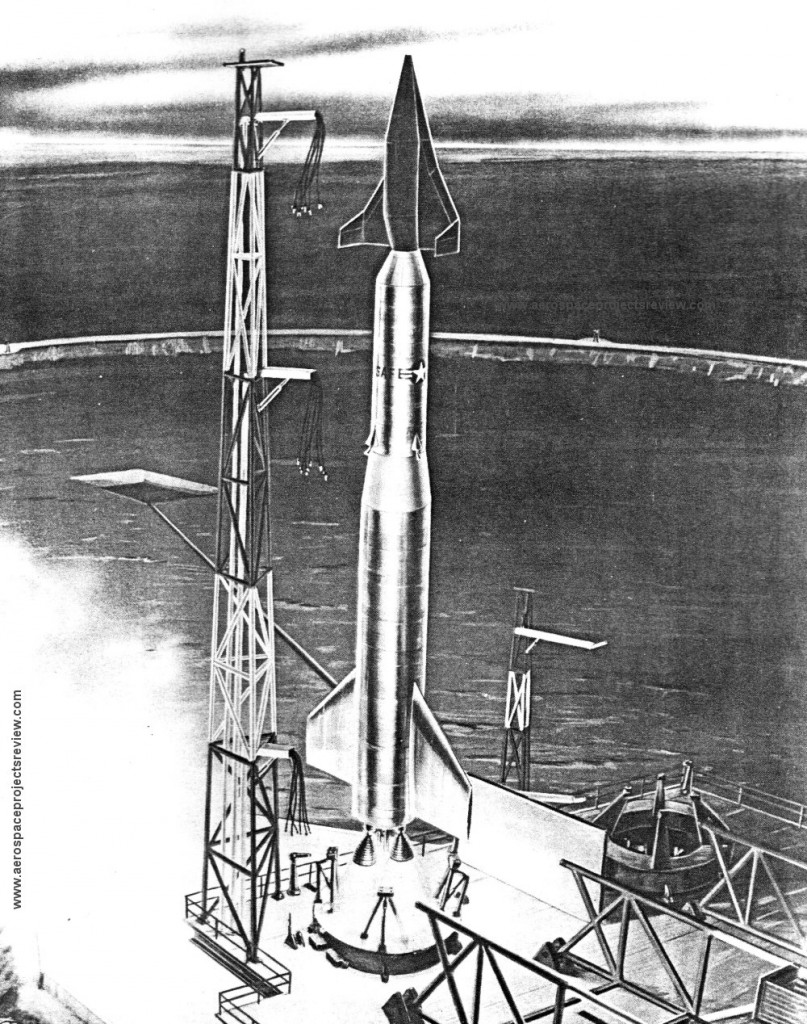From an Aerojet booklet from 1987, a basic sketch overview of the National AeroSpace Plane.
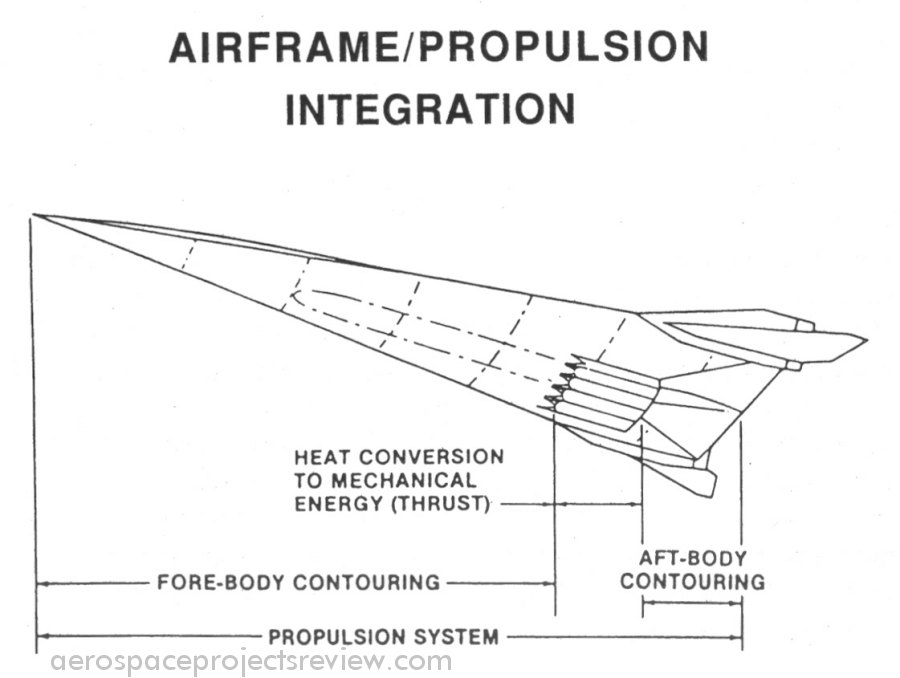
A truly gorgeous, and at first glance quite convincing, mockup of the MX-1964 predecessor design to the B-58. Note that this full-scale model is hanging from the ceiling by wires, much like many another model aircraft.
One of the more unconventional Space Shuttle concepts was this minor Grumman concept from 1971. Similar to the Lockheed STAR Clipper stage-and-one-half design, this design featured a fully reusable rocket powered spaceplane with expendable propellant tanks. Unlike the STAR Clipper, the Grumman design had four unattached tanks and a non-lifting body wing-body orbiter.
The Convair B-58 Hustler grew out of a long series of design studies dating back to the years immediately following World War II. Early concepts called for small jet bombers carried aloft by B-36 or B-60 bombers, and would shed jet engine pods during the mission. These massively complex and expensive systems evolved over time to the somewhat more straightforward B-58 which was a single stage aircraft carrying an underslung pod containing both jet fuel and a single nuclear weapon. But even that was originally intended to be a rocket powered missile.
The B-58 evolved directly from the MX-1964 design from 1952. This is recognizably related to the B-58, but had the four jet engines in two pods rather than four, and a higher degree of integration between the pod and aircraft.
The XP-71 was a sizable Curtiss-Wright design from 1941 for a long range escort fighter. Irritatingly little has been publicly revealed about it. This is assuredly not due to the XP-71 being such an incredibly advanced design (although it was incredibly complex), but rather due to it having been a failed concept. Armed with two 37mm and one 75mm cannon, the XP-71 was bigger and substantially more expensive than a medium bomber such as the B-25, and would likely have been less nimble than a smaller fighter. While the armament would have packed a mighty whollop, targeting an Me 109 or a Zero would have been a matter of great luck or incredible skill. The XP-71 effort lasted from 1941 to 1943.
While I’ve recently been clued in on a Curtiss-Wright report with some good drawings of an oddly swept-wing version of the XP-71 (release of further info currently embargoed), very few decent quality drawings seem to have been released. One of the very few “official” three-views is a rather small diagram from a NACA report describing a great many spin-tests. I’ve not yet located the specific test reports dealing with the XP-71.
A 1969 Convair concept for a space shuttle. The Triamese used three vehicles that shared outer mold lines and many components… two as boosters, a third as the orbiter. The orbiter would have more complex rocket engines, featuring extendable nozzles for improved high altitude performance. All three included cockpits, relatively small high aspect ratio wings that would be stowed internally and flip out for landing, and flip-out turbofans for re-entry cruise and go-around capability. Numerous variants were studied including biamese versions using dissimilar boosters and orbiters.
A 1963-vintage NASA illustration of the NERVA nuclear rocket engine. This is schematic only, depicting the main components of the nuclear engine. Not labeled are the two vernier thrusters; these take the otherwise wasted hydrogen exhaust from the turbopump and direct it more or less aft for some additional thrust. Further, they could, unlike the main engine, gimbal; this would provide a measure of thrust vectoring.
A Bell Aircraft illustration of the D188A VTOL strike fighter. This design was described in detail in Article 34, available for both download and printed.
You can download a 5.5 megabyte version of this diagram; the link is HERE. To access it, you will need to enter a username and password. The username: the first word in the body of the text on page 6 of APR issue V1N4. The password: the first word in the body of the text on page 14 of the same issue. Note that both are case sensitive.
A reproduction of admittedly dismal quality of a Martin Co. painting of their December 1958 Dyna Soar configuration at launch. This configuration, the product of a team-up of Martin and Bell, competed against Boeing (and other companies) and lost; what must have been grating for the Martin-Bell folks was that the Boeing design that won looked nothing like the final Dyna Soar design… which actually looked a whole lot like this vehicle.
The Dyna Soar is here being shown launched by a modified Titan I ICBM. This booster would have fallen far short of orbiting the Dyna Soar; instead it would have simply tossed it on a long hypersonic suborbital trajectory. This would have been a purely experimental aircraft, the natural follow-on to the X-15.
